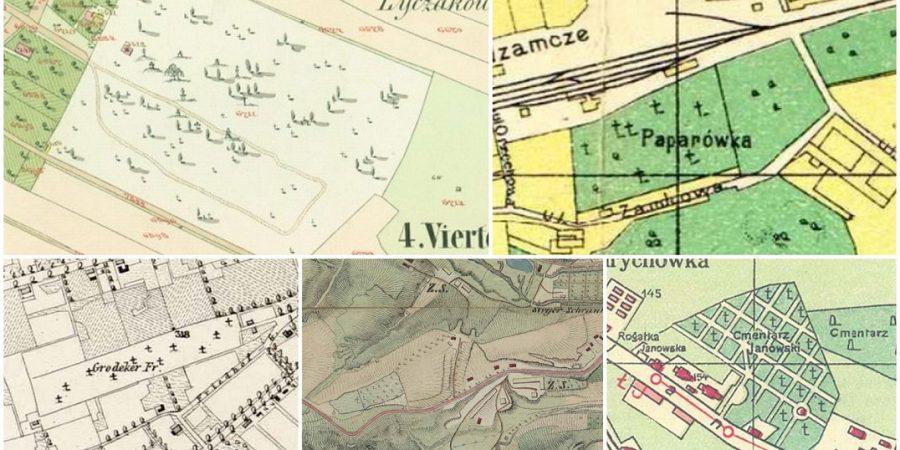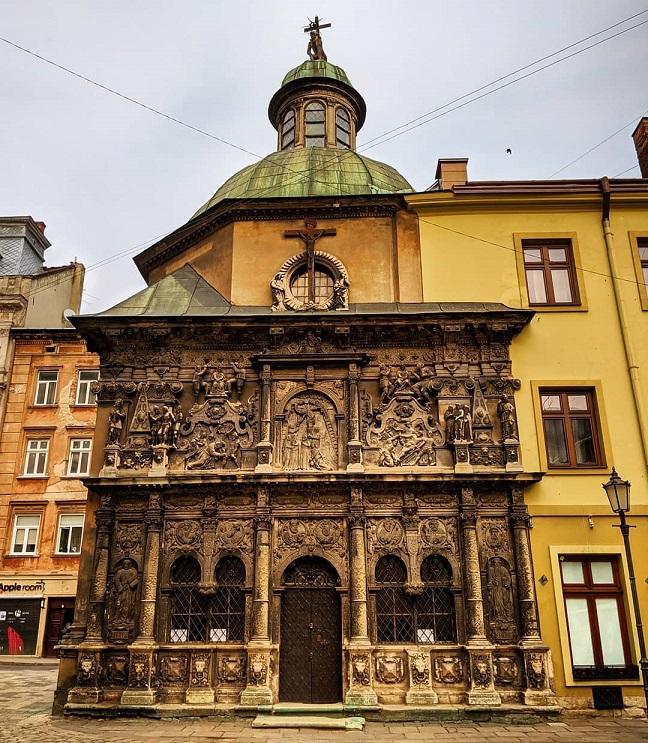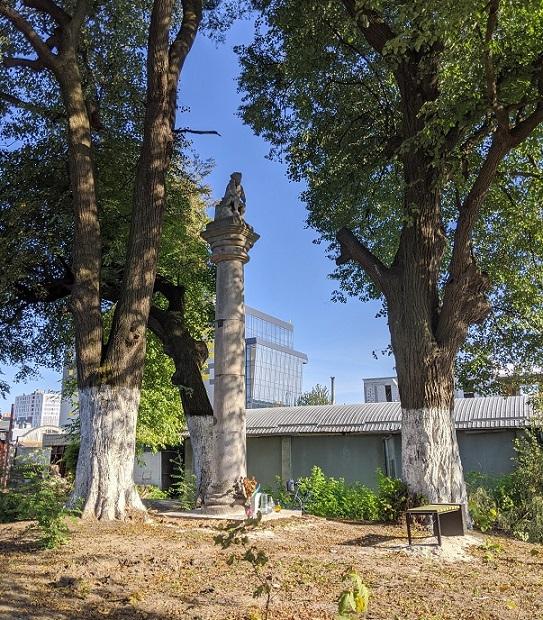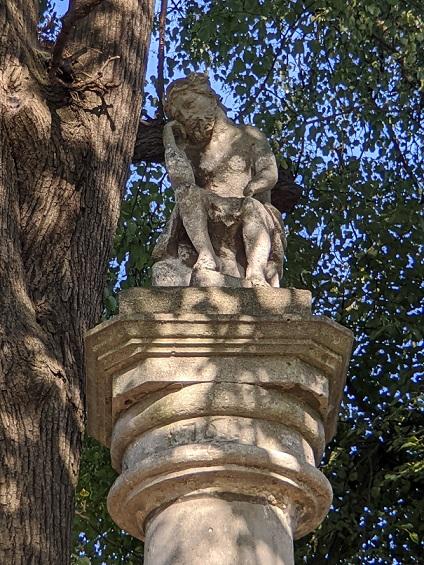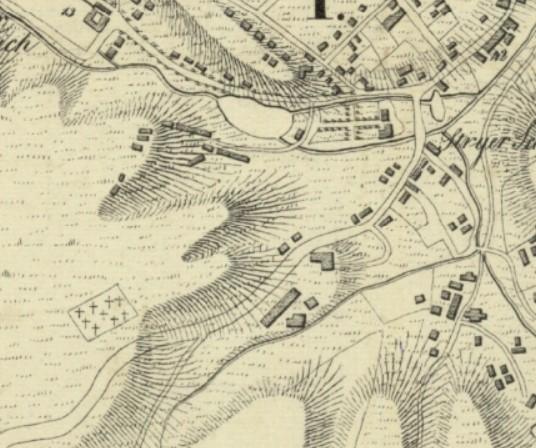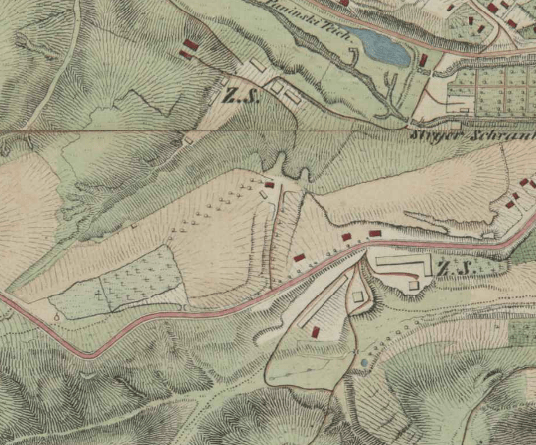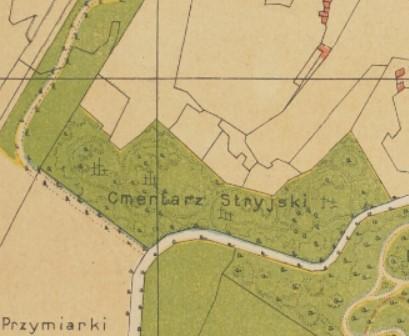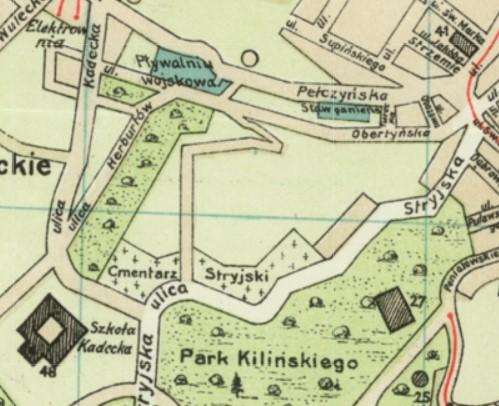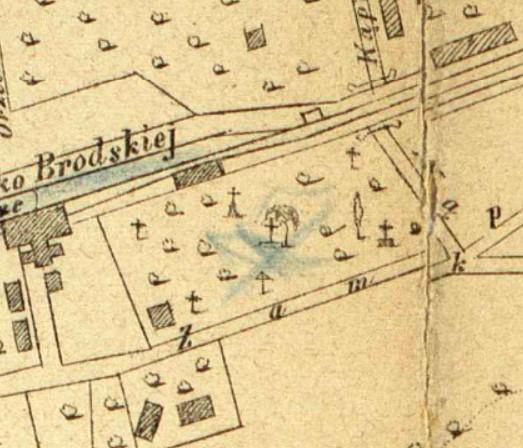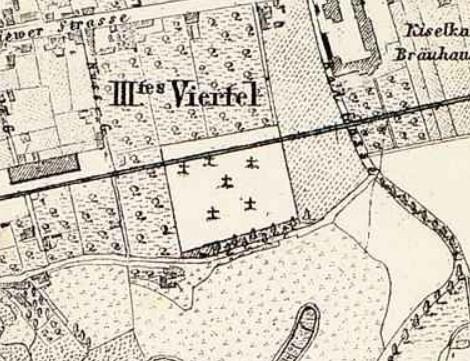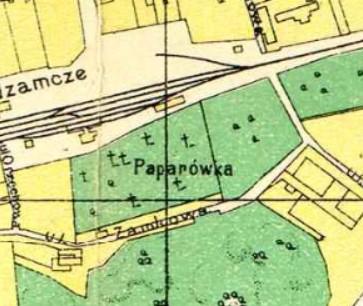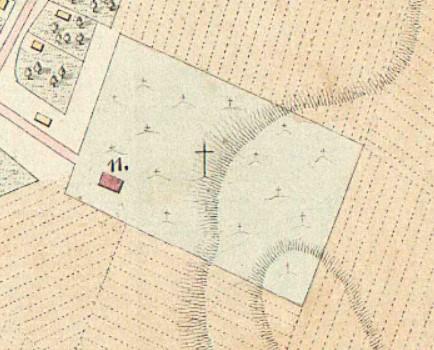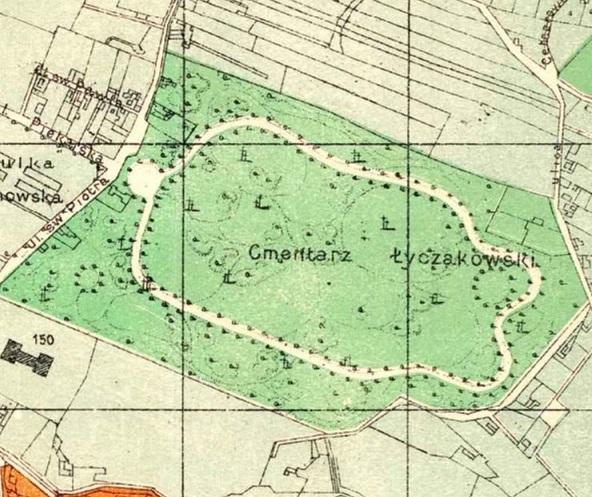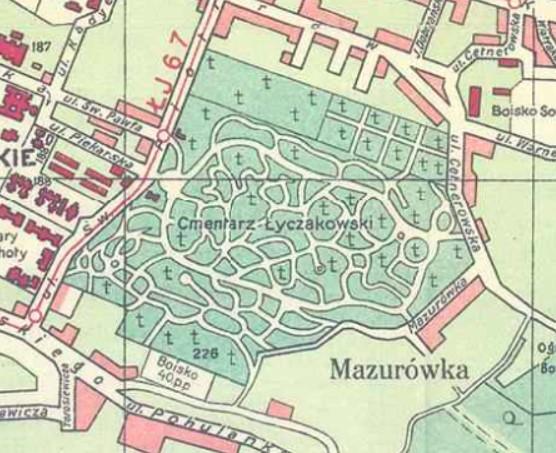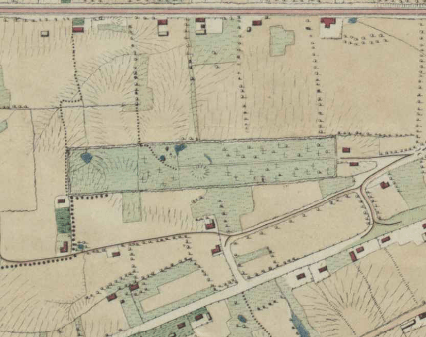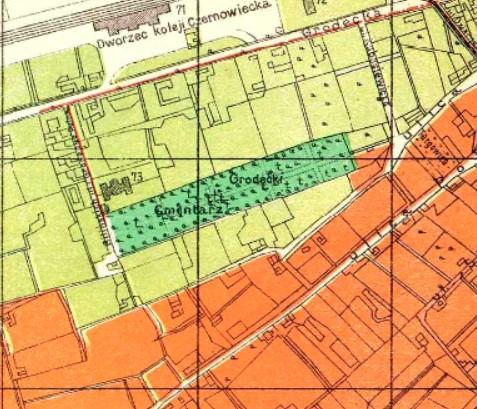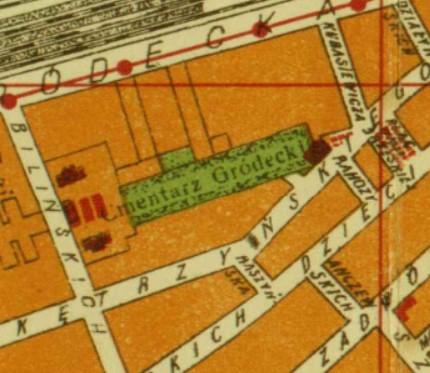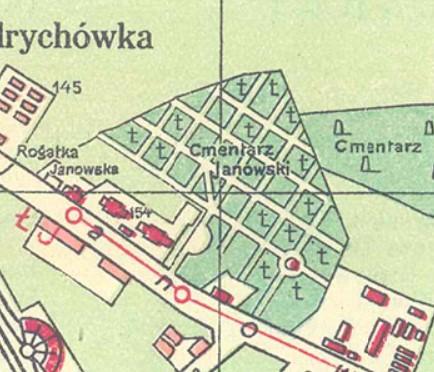Everyone has heard of Lviv’s Lychakiv Cemetery — not only is it well-known among locals, but it is also one of the city’s main tourist attractions. The beautiful sculptures, winding paths, and prominent figures buried here attract a constant flow of crowds. Though not nearly as popular, Yaniv Cemetery is another large historic city cemetery, known especially for its many military graves.
Yet few people realize that Lviv (Lemberg / Lwów) originally had four Austrian-era municipal cemeteries — and Yaniv was not even one of the them. Indeed, in addition to Lychakiv Cemetery, three more cemeteries were established, which today no longer exist.
Before delving into the history of the municipal cemeteries, let’s first look at the burial practices that were widespread in Lviv before the arrival of the Habsburgs.
Medieval Burial Practices
In medieval times, both inside the fortified town and nearby there were many cemeteries, which were situated near churches and monasteries. Furthermore, outside Lviv’s walls there were also military mass graves and plague pits.
In addition to the Christian cemeteries, the Jewish community had its own cemetery located outside the city walls in the Krakiv suburb (Jewish cemeteries will be covered in a separate post), and both the Tatars and Saracens likely had their own Muslim cemetery, which is thought to have been in the area of the modern Citadel.
Churchyard Cemeteries
Since the founding of Lviv, Christian parishes — the largest Christian denominations in medieval Lviv were Catholicism, Orthodoxy, and the Armenian Church — have followed the tradition of burying the dead in churchyards. Accordingly, the main cemeteries of both the town and the suburbs were located near churches and monasteries.
One of the largest cemeteries inside the city walls was the graveyard near the Latin Cathedral, from which only the Boim Chapel has survived.
Since graveyards located near monasteries and churches threatened the sanitary conditions of the city, during Austrian rule all medieval cemeteries were liquidated (more on this below).
Military Mass Graves
Mass graves for soldiers were also once common in Lviv. For example, more than 2,000 German mercenaries who died in the Battle of Khotyn in 1621 were buried near the St. Lazarus Hospital and Church (on Kopernyka Street). In 1648, after the seige of Lviv, about 40 Cossacks of Bohdan Khmelnytsky were buried near the medieval Church of the Annunciation (now a square on Kniazia Romana Street). The church was torn down in 1800, and the burial mound was excavated in 1873.
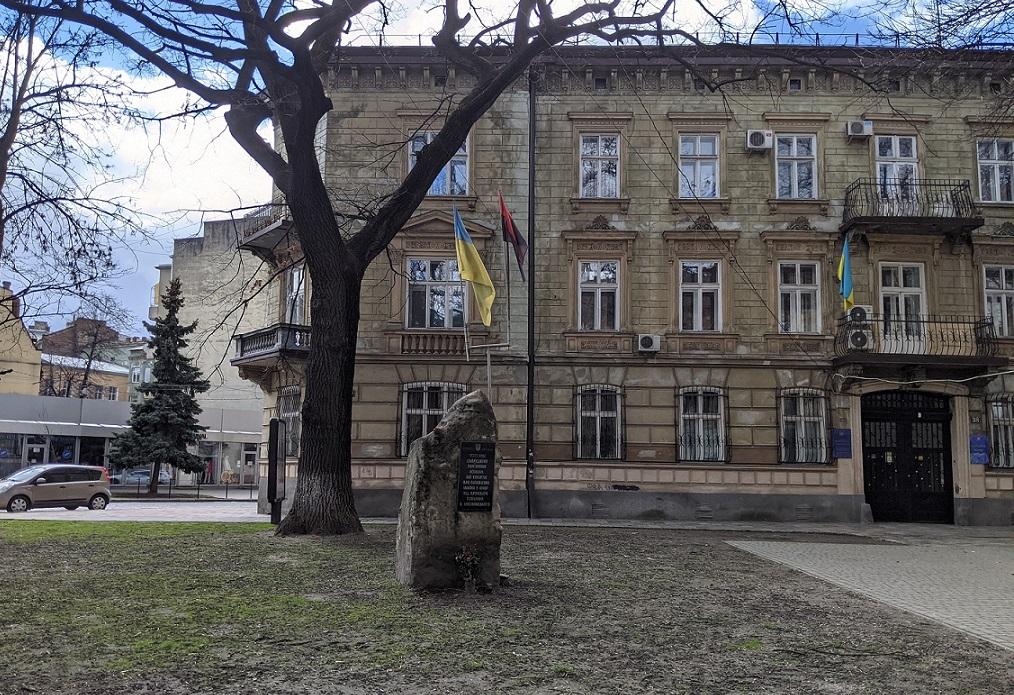
Plague Pits
Plague, cholera, and typhus epidemics were a frequent phenomenon of medieval cities, including of Lviv. Those who died during the epidemics were not buried in city cemeteries, but outside the city walls. In some cases, these cemeteries were also the burial grounds for people who committed suicide or died by duel, for according to the beliefs of the time, they could not be buried in consecrated land.
At the end of the eighteenth century, owing to their distance from populated areas of the city center, three such plague pits were turned into municipal cemeteries.
A former plague cemetery dating from 1761, originally located outside Lviv, today within city limits on Zelena Street
Austrian Reforms & the Establishment of Municipal Cemeteries
On December 11, 1783, the Habsburg Court Office in Vienna issued a sanitation ordinance requiring the municipalities of all the empire’s provinces to liquidate churchyard cemeteries and to set aside special areas outside of populated areas for burials.
As a result, over the course of the next several years, four of the existing cemeteries on the outskirts of Lviv acquired municipal status and were designated for one (or two) of the city’s recently established districts: Lychakiv Cemetery was established for the city center and for the Brody district (later named Lychakiv), Paparivka Cemetery for the Zhovkva district; Horodok Cemetery for the Krakiv district; and Striy Cemetery for the Halych district. Later, at the end of the nineteenth century, due to the limited space in the Stryi and Horodok cemeteries, an additional one, Yaniv Cemetery, was established.
And while these cemeteries were outside the city as per the original ordinance, the rapidly growing city soon began to absorb the new cemeteries.
It is also important to note that while the inhabitants of each district were supposed to be buried in their respective cemeteries, it was possible to change the burial place for an additional fee. For example, burials in Lychakiv Cemetery, considered “elite,” were more expensive than in other cemeteries.
Stryi Cemetery
Polish: Cmentarz Stryjski
Old Stryi Cemetery
Location: Lower part of today’s Stryiskyi Park near the Jan Kilinski monument, between Stryiska, Rutkovych, and Parkova Streets
First burials: 17th century
Becomes municipal cemetery: 1783
Designated for: Halych District
Closed: 1823
Destroyed: Second half of 19th century
The old Stryi Cemetery dates back to the seventeenth century, when those who died of the plague during the reign of King Jan II Casimir of Poland started to be buried outside the city. This territory became a municipal cemetery in December 1783, and in September of the following year was designated for the first district (Halych) of the city. The necropolis was located on a rectangular plot of land bordered to the east by the Soroka tributary of the Poltva, not far from the original Stryi tollgate.
The cemetery did not exist for long, closing in 1823. Situated on the clay soils of a high hill sloping toward the city, it never met the proper sanitary and hygienic requirements.
In 1879 the city council opened nearby a public park, which was later expanded at the expense of the old cemetery. Some of the ancient tombstones were used in the construction of the water tower and the artificial ruins of the General Regional Exhibition of 1894.
New Stryi Cemetery
Location: Between the modern streets of Stryiska, Heroiv Maidanu, and Lyzhviarska
Established: 1823
Designated for: Halych District, victims of epidemics, poor population
Closed: 1893
Destroyed: 1970s
The same year that the old Stryi Cemetery was closed in 1823, an alternative one was opened. The new cemetery was located on the opposite side of Stryiska Street, not far from the original one.
At first some prominent people, in particular government officials and the military, were buried in the new cemetery. But soon it became a the place to bury the victims of epidemics, which in the nineteenth century were quite common. It also became the resting place for the poor, homeless, orphans, infants, the sick, prisoners, criminals, and suicides.
Compared to other cemeteries, the number of burials in Stryi Cemetery was significantly lower. The situation changed only after the closure of Horodok Cemetery in 1875.
The opening of Yaniv Cemetery in 1883 marked the beginning of the end of the Stryi Cemetery. Ten years later it was closed and the city was divided into two cemetery districts: Yaniv and Lychakiv.
In the 1940s and 1950s, the Bohdan Khmelnytsky Park of Culture and Recreation was created on the site of the new Stryi Cemetery. Monuments to Vladimir Lenin and Joseph Stalin were erected, the latter of which was replaced by a monument to Karl Marx in 1953. These were destroyed in the 1970s to make way for the Monument of Military Glory of the Armed Forces of the USSR.
Paparikva (Zhovkva Cemetery)
Polish: Paparówka (Cmentarz Żółkiewski)
Location: Northern side of the foot of the High Castle between current streets Zamkova and Paparivka
First burials: Mid-17th century as a plague cemetery
Becomes municipal cemetery: End of 18th century
Designated for: Zhovkva District
Closed: 1856
Destroyed: Beginning of 20th century
Paparivka (also called Zhovkva Cemetery) appeared outside the city in the middle of the seventeenth century during a plague pandemic. Since there was a lack of burial places in the center of Lviv, the Greek-Italian Papara family (coat of arms of Paparon) donated a part of their land to the city. Here they buried plague victims as well as suicides and duelists, who, according to medieval beliefs, could not be buried in the consecrated land near churches.
At the end of the eighteenth century, Paparivka became one of the first suburban cemeteries.
Paparivka was closed for burials in 1856. In 1868, the northern part of the cemetery was allotted for the construction of the Pidzamche railway station. The closed cemetery began to collapse, and some of its tombstones were moved to Lychakiv and Horodok cemeteries.
At the beginning of the twentieth century, the cemetery in Paparivka was completely destroyed and the remaining tombstones were used by locals as foundations for their houses.
Lychakiv Cemetery
Polish: Cmentarz Łyczakowski
Location: In the Lychakiv neighborhood, main entrance from Mechnykova Street
First burials: 16th century as a plague cemetery
Becomes municipal cemetery: 1786
Designated for: City Center & Brody (Lychakiv) District; intelligentsia, middle and upper classes
Today: Museum and only for prominent Lvivians
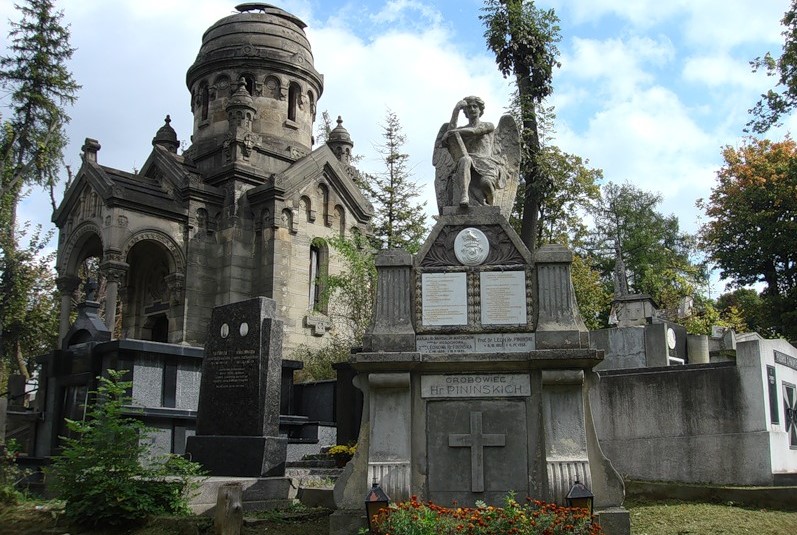
The first mention of this cemetery dates back to about 1567, when the victims of the plague were buried here.
After its creation in 1786 as a municipal cemetery, it became the main necropolis for Lviv’s intelligentsia and themiddle and upper classes. While officially it was designated only for the city center and the Brody (Lychakiv) District, for a fee anyone could be buried here.
The cemetery was expanded several times. In 1856 Lviv University botanist Karol Bauer together with the head of the cemetery Tytus Tchórzewski created the present network of alleys, giving the cemetery the feel of a park.
Lychakiv Cemetery was used by all Christian denominations in the city: Roman Catholics, Eastern Rite Catholics, Protestants, and Orthodox.
The cemetery also has numerous war memorials and a military burial places, in particular the Cemetery of the Defenders of Lwów for the Poles who died during Polish-Ukrainian War (1918−1919) and Polish-Soviet War (1919−1921) and the Ukrainian National Army Memorial.
After World War II the city was annexed by the Soviet Union and the majority of the surviving prewar inhabitants of the city were expelled to Poland. This started a period of devastation of historical mausoleums and headstones at the cemetery. However, in 1975 the cemetery was declared a historical monument and the destruction ended. Today, Lychakiv Cemetery is one of the main tourist attractions of Lviv.
Because of its museum status, the cemetery is closed for burials. Exceptions are made for prominent Lviv residents, repressed people, political prisoners, UPA soldiers and those killed in the current Russian-Ukrainian war.
Horodok Cemetery
Polish: Cmentarz Gródecki
Location: Narrow plot between Horodotska and Fedkovycha Streets, bordered by Smal-Stotskoho and Horskoyi
First burials: End of the 17th century, soldiers and then poor citizens
Becomes municipal cemetery: 1787
Designated for: Krakiv District
Closed: 1875
Destroyed: After WWII
The site of the Horodok cemetery was first mentioned in 1682 as a meeting place for the troops of Polish King Jan III Sobieski, ready to help the Turkish-besieged Vienna garrison in 1683. Up until the last days of the Polish-Lithuanian Commonwealth, the grounds were used for the military parades of the Knights’ Circle. It also became a place where soldiers were buried as there was a lack of space in St. Anna’s churchyard. Eventually others were also buried here, in particular poor citizens.
At the end of the eighteenth century, the cemetery gained municipal status and became the final resting place for inhabitants of the Krakiv District. Regular burials in Horodok Cemetery lasted until September 1, 1875.
In 1908, buildings were erected on the east and west sides of the cemetery plot. After World War I, more and more of the territory of Horodok Cemetery was developed. The cemetery was completely destroyed after World War II.
Yaniv Cemetery
Polish: Cmentarz Janowski
Location: Entrance from Shevchenka St., in the historical neighborhood of Klepariv
Opened: 1883
Designated for: Western part of the city; the poorer population
Closed: Early 1980s
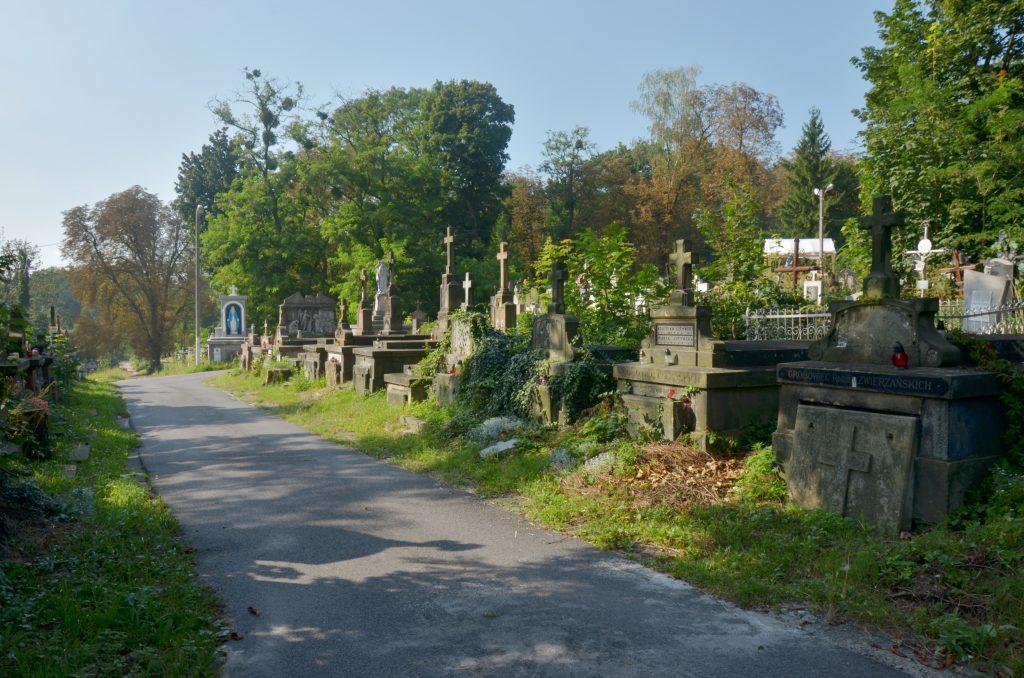
By the last quarter of the nineteenth century, the Horodok and Striy cemeteries had reached full capacity. This along with the increasing population size warranted a new cemetery for the western part of the city, and in particular for the growing working class. Thus, in 1883 Yaniv Cemetery was established, quickly becoming the second most important cemetery in Lviv.
Although originally the place for the poorer population, in later years several famous people were buried here as well. Nonetheless, the cemetery could never compete with the elite Lychakiv Cemetery, which is also evident in its smaller concentration of artistic and highly decorative monuments.
The cemetery has many civil and military graves from the First and Second World Wars, including those of the Ukrainian Galician Army Riflemen, Polish military men, Nazis, and victims of the Yaniv concentration camp of 1941-1943.
In the early 1980s, due to a lack of space, Yaniv Cemetery was closed. An exception is made for families who have their own tombs.
Prewar Period & Annexation of Village Cemeteries
By the end of the Austrian era, Lviv had just two municipal cemeteries. But after the First World War, the city’s borders expanded and several village cemeteries became part of Lviv, including the Znesinnia village cemetery located in Kaizerwald, the Holosko village cemetery, and the old cemetery in Levandivka. Thus today it is possible to stumble across small prewar cemeteries in the outskirts of the city.
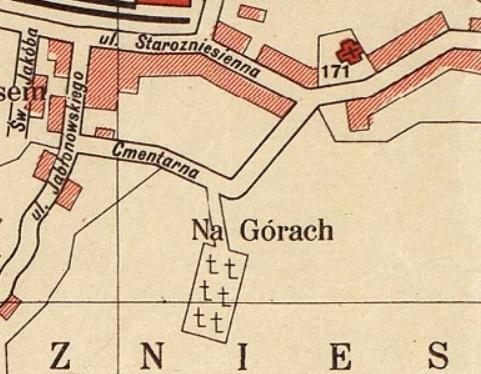
By Areta Kovalska
Sources:
Цвинтарі Львова
Янівський цвинтар
Жовківський цвинтар
Городоцький цвинтар
Личаківський цвинтар

